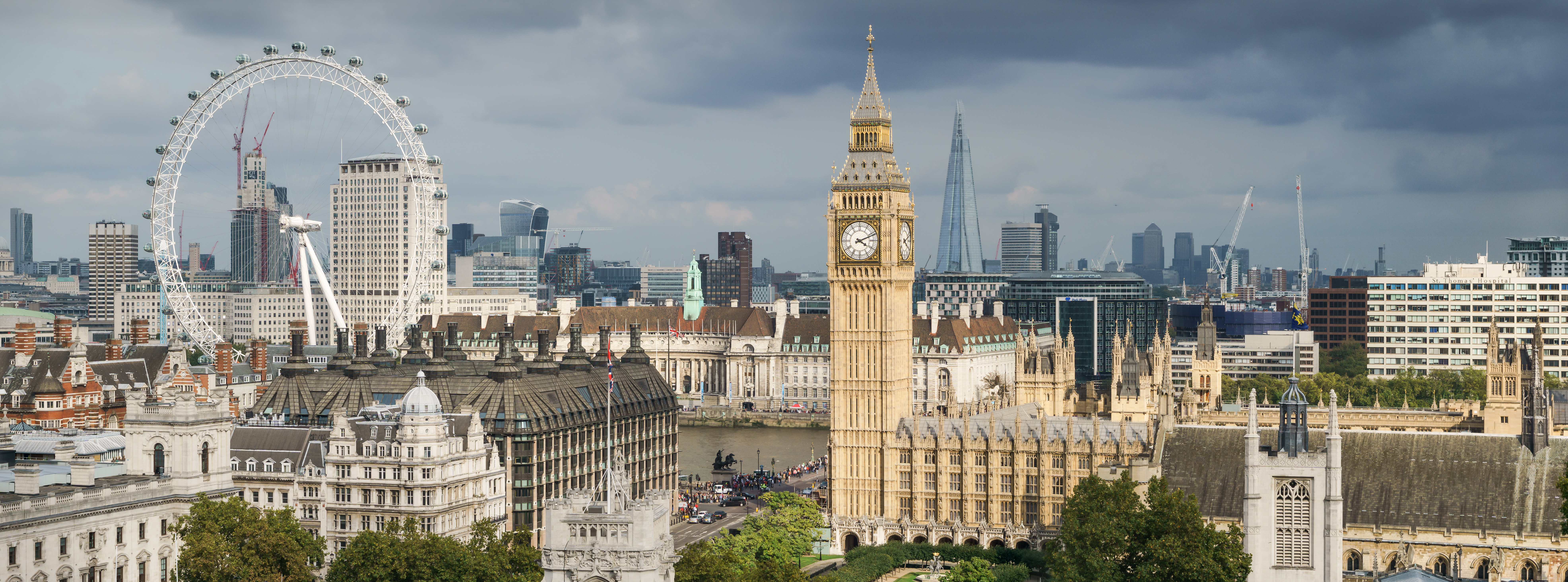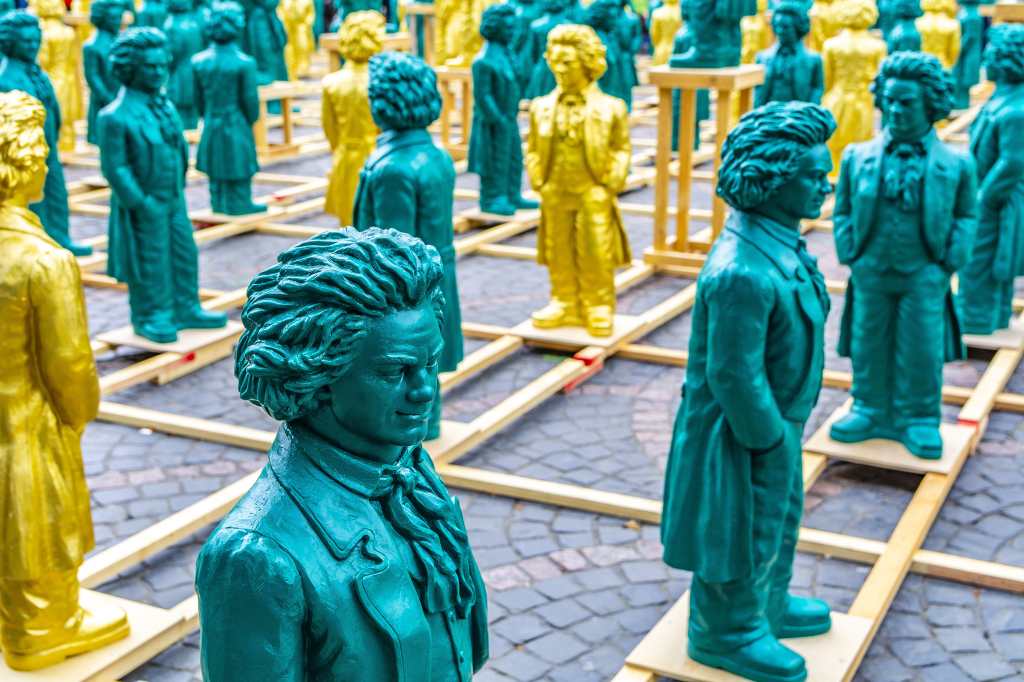
May 2021
La Clemenza di Tito – Royal Opera House – 18th May – ***
First live event out of the block in 2021. A visit to the socially distanced ROH with BUD to see La Clemenza di Tito, Mozart.s late opera, from 1791, with libretto from by Caterino Mazzolà, after Pietro Metastasio.
Now first up I must say like the ROH more than half empty. The price to seating value in the ROH is normally dreadful, even in the stalls (never done a fancy box mind) and I have had some major run ins with rude punters there, proof that the entitled, including me, are a generally dispiriting bunch. Anyway this time I went cheap(ish), front of amphitheatre, yielding a good enough view, and no BUD squashing. No bar scrum at the interval and everyone masked up, unlike now where the majority can’t be arsed. People, it’s just a bit of cloth, intended to help others out (not least those who work there), not the beating drum of totalitarianism. So get over yourselves.
Anyway I had put in a bit of research by watching the Bergen National Opera LCDT production stream a few weeks earlier though, frankly, the plot ain’t rocket science.
Imperial Rome. Vitellia seeks revenge against Emperor Tito because his dad deposed her Dad. She winds up Tito’s mate Sesto, who fancies her something rotten, to sort him out, but then she calls him off because she, Vitellia, now reckons she can pull and marry Tito. I know the old “I want him dead, I want to wed” routine. We’ve all done it. Tito though plumps for Servilia, Sesto’s sister, as his bride, and sends Annio, Sesto’s mate, off to tell her. An in person proposal clearly beneath him. But, uh-oh, Anno loves Servilia, and she requites, so she tells Tito and he does the decent thing and steps away. However Vitellia hears about this and goes apeshit, once again telling Sesto to top Tito. For reasons that weren’t entirely clear to me, beyond the excuse for a cracking aria, “Parto, parto, ma tu, ben mio”. And then, blow me, if Tito doesn’t decide to marry Vitellia who realises that bullying his mate into being his hit-man is not a good look. Sesto goes for the old “burn down the Capitol” assassination technique which strikes me as a bit OTT. Everyone reacts with horror thinking Tito is now toast, literally, but Vitellia manages to muzzle Sesto before he blabs. Curtain.Interval.
Annio announces big Tito isn’t dead; the corpse Sesto saw was another geezer (yep really) and that he only stabbed another bloke dressed as Tito. Annio persuades Sesto to stay and face the music, but the Court finds him guilty. Annio begs Tito to go easy his bessie and offer him a way out. But pig-headed Sesto says he deserves to be executed, “Deh, per questo istante solo”, so Tito, because he can, (thats autocracy for you), tears up the death warrant. Final twist. Just before Tito can reveal his mercy trip at the Games (where other poor buggers are about to be torn apart by lions), Vitellia confesses that it was all her idea, but Tito, now puffed up on all this clemency lark, lets her off too. Universally acknowledged, Tito, for a tyrant, is a top bloke.
Now you can probably see some flimsy propaganda at work here. And indeed, LCDT was commissioned by the Estates of Bohemia, on the coronation of Leopold II, Holy Roman Emperor (which was still a thing), as King of Bohemia, to keep the nobles sweet. Remember the great and good all over Europe were sh*tting their collective pants about what was going on in France, so it was good to remind them that Leopold was having now of that Revolution nonsense in his back yard.
Metastasio’s libretto was already an opera standard, but Mazzola edited it down when WAM came on board, seeing a big purse, Salieri having turned down the gig. And our Wolfie turned it round sharpish, 18 days apparently. Maybe it shows. It isn’t on a par with Figaro and Don Giovanni but, hey, it’s Mozart so it is a) now pretty popular and b) in places sublime. Both BUD and the Tourist couldn’t go all in though: ULTZ’s monochrome set gets shunted around a fair bit and Richard Jones’s direction, in part to accommodate Covid 19 restrictions seemed disjointed at times, with on stage actions not always clear in intention or delivery. We warmed to Emily d’Angelo’s babyface, footballing (?), Sestus far more than the star turn here of Nicole Chevalier as Vitellia (who sometimes risibly over-acted, though she can sing) with Edgaras Montvidas’s Tito lacking a little authority, visually and aurally. Angela Brower (Annio) and Christina Gansch (Servilia) looked and sounded more comfortable. The “intimate” scenes notably between Sesto and Tito proved more affecting than the “public” scenes which were a bit underpowered, unfortunate given the nature of power vibe is what I think Mr Jones was aiming for. The orchestra, under Mark Wrigglesworth, delivered though, in my bank you can always step on the gas more with Classical scores, the harpsichord continuo made its way up to the gods and the chorus, sadly offstage, was lovely.
Flight – Bridge Theatre – 27th May – ****
A very different live theatrical experience a few days later. BD and I had planned to go to see Flight during the late 2020 window but missed out as it was serially canned. So glad I persisted. Vox Motus, led by Jamie Harrison and Candice Edmunds, promise “a theatre of story-telling visuals, transformational design, magic, comedy, music, physical performance, puppetry, multi-media and most importantly thrills.” To be fair Flight doesn’t quite live up to that promise but only because of its format and not in its impact. It is conceptually simple; a revolving diorama containing miniature models in lit-up boxes with an accompanying soundtrack on headphones. After a bit of necessary C19 induced marshalling we were shown to our individual booths and straight into the story of Aryan (voiced by Farshid Rokey) and Kabir (Nalini Chetty), Afghan orphans who are orphaned Afghan boys who make the hazardous journey from Kabul to London. Along the way they nearly freeze to death in a lorry, are enslaved and forced to pick fruit, encounter hatred and compassion. They make it but there is no happy ending. The models are beautifully crafted, some of the tableaux extremely imaginative and the text involving. Maybe the revolve it is a bit slow and the juggling of viewpoints horizontally and vertically a little sapping, but the story is so heartfelt that this can be forgiven. The innovation format drives home the message. Forced migration isn’t going to go away. Likely the reverse. Lines on a map won’t make any difference. Hate won’t work. Love might.
Walden – Harold Pinter Theatre – 29th May – ***
Producer Sonia Friedman, who pretty much single-handedly gets quality theatre into the commercial West End, what we might call a vital actor in the theatre economic ecosystem, was quick out of the blocks with her Re:Emerge series post lockdown. Anna X was a hit at the 2019 Vault Festival, J’Ouvert (still availble on BBC I Player) came via Battersea’s finest Theatre 503 and Walden, which I plumped for, was a new work from New Yorker Amy Berryman. For me the draw was Ian Rickson as director, though a cast of Gemma Arterton, Fehinti Balogun and, especially, Lydia Wilson, helped. Gemma Arterton is a better actor than her credits suggest, her performance in Josie Rourke’s Saint Joan at the Donmar is evidence thereof, similarly Fehinti Balogun is set for a stellar career (as is his namesake Michael, he of the extraordinary backstory, check it out). Lydia Wilson, however, was my favourite going in after spying her in Rebecca Frecknall’s Almeida Duchess of Malfi and the Cheek by Jowl Tis Pity She’s a Whore, and, post this performance remains so, though there isn’t much in it.
All three however were excellent in a play which, having started with a bang, but failed to develop its interesting themes, relying instead on the somewhat limited opposition between two sisters, Stella (GA) and Cassie (LW). It’s the near future, climate change has ravaged Earth, so it’s time for Homo Sapiens to ravage the rest of the solar system. Stella was the designer of the off Earth settlements, Cassie a botanist thereon. High achievers both, Daddy was a big cheese at NASA and don’t they both know it, Stella has turned her back on the Project to shack up with climate activist Ryan, Cassie drops by (though this is a cabin in backwoods America, where the water is still clean) to try to persuade her back into the fold. Believable debates ensue about the fate of man and woman kind, principle vs pragmatism, scientific duty and ethics, ambition and fulfilment, laced with a bit of sexual frisson, all against a backdrop of sisterly rivalry. The text matches the concept, Mr Rickson’s tempo is note perfect as usual, it is just that Ms Berryman, having laid it all out can’t find anywhere to go thereafter so dramatically it just fizzles out. A bit more bite, a bit more ambiguity and this could be a very powerful play.
Best of the rest
A couple of live exhibitions on top of these three outings. Matthew Barney’s Redoubt at the Hayward Gallery (***), a multimedia exploration of Ovid’s Diana and Actaeon, which I assume is also a climate change plea, was just too dense for the Tourist to fully appreciate. Mr Barney has created a (long) silent film where he figures as The Engraver, a ranger in the Idaho Rockies, who tracks and is tracked by a sharpshooter Annette Wachter, and her two sidekicks, a Watching Virgin and a Tracking Virgin. Woods, rocks, water, snow, trailer, skies, skis, rifles, deer, wolves, cougars, bears, copper plate and its processing, there is a lot to take in, ad I confess to bewilderment when I trawled through this back home. However the sculptural output, burnt, scarred trees amalgamated with coppers, alloys, resins, plastics, often in the form of gun parts, is fascinating, the copper plates marginally less so. As are the myths and facts that flow from Barney’s investigation. I only scratched the surface (no pun intended) but it isn’t difficult to see why he has such a high reputation in artistic circles.
South African portrait photographer Zanele Muholi is also lauded, though the focus of their practice is very different, as the Tate Modern retrospective (***) revealed. Across 260 works they describe the lives of South Africa’s Black lesbian, gay, trans, queer and intersex communities. Their perspective may change but their intent, to show love and joy, bodily delight, as well as sickening trauma (“corrective” rape still exists in SA) and discrimination, and thereby shift perceptions, is unyielding. Political as well as political, dripping with satire. Makes you think, makes you stare. BD is better placed to walk you through the context. I was bowled over, in parts, by the beauty, aesthetic and intelligence of the later staged images, especially the self-portraits. And genuinely saddened by the realisation that some of their subjects and collaborators were now dead, victims of violence and HIV/Aids.
Which just leaves a couple of baroque concerts and a couple of theatrical entertainments on screen. Pale Sister (also available as part of the lights Up series on I Player) has Lisa Dwan playing Ismene, Antigone’s sister, written for her by Irish man of letters, Colm Toibin and directed by Trevor Nunn. I yield to no man in defence of the virtues of Ms Dwan, but the monologue actually steers too closely to the Sophocles inspiration when I was hoping for some departure. Still well worth watching.
Much better, and actually a surprise highlight of my on line viewing, was Bristol based Wardrobe Ensemble’s distillation of F. Scott Fitzgerald’s The Great Gatsby. Tamsin Hurtado Clarke and Jesse Meadows, along with director Tom Brennan and dramaturg James Newton, have preserved, indeed in some ways, enhanced, the essence of Fitzgerald’s elegant skewering of the American Dream, condensing it down to just 90 minutes and imaging as one long, and increasingly, desperate party. They neck champagne from paper cups, sing and dance, make use of a few props. The two actors play all the key characters, Jay Gatsby, Nick Garraway, Jordan Baker, Daisy and Tom Buchanan, George and Myrtle Wilson, even managing to convince when simultaneous dialogue is required. FS-G’s heightened plot, as in the book, is easy to digest. OK so the material trappings of these shallow lifestyles is obscured as is the duplicitous complexity of the characters therefore sacrificing some of the novel’s bite. On the other hand their often ambiguous sexual identity is brought into focus as is the tragedy at its heart. Well worth seeing.









